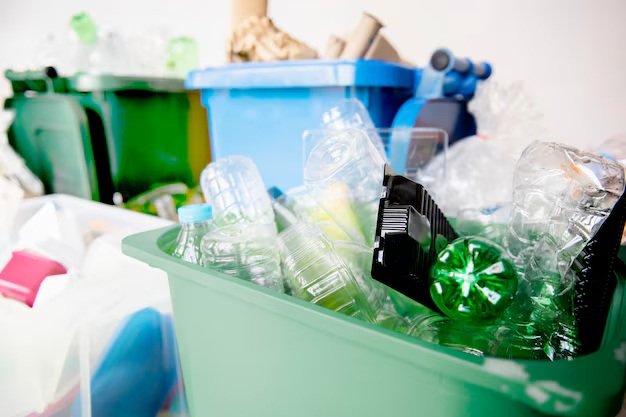How Student Swap Shops Are Cutting Dorm Waste and Saving Tens of Thousands of Pounds of Landfill Trash
Dorm move-out week used to mean mountains of trash: mini-fridges abandoned on sidewalks, stacks of stained bedding left curbside, and boxes of clothing that never found new owners. Over the last decade, students and sustainability teams at colleges have quietly built a low-tech, high-impact answer — the swap shop. These are campus run-abouts where students drop off unwanted but usable items, and other students pick them up for free or low cost. They are simple to run, often volunteer-led, and they stop usable goods from becoming landfill fodder. According to NYU’s Office of Sustainability, the university now runs a Swap Shop to redistribute items collected from residence halls.
Swap shops are not only about convenience. They make a dent in waste at the moments students produce the most: move-out and move-in. A pattern repeats across campuses — in spring, when students leave, dozens or hundreds of items are set out for collection; over the summer, volunteers sort, clean and store the goods; in the fall, incoming and returning students are invited to “shop” for the essentials. The result is both immediate and measurable: tens of thousands of pounds diverted at some campuses, plus thousands of students buying fewer new items.

Real Numbers: Pounds Diverted and What They Mean
When people say “tens of thousands of pounds,” the data backs it up. A report by Kent State University in 2020 documented that their textile reuse and recycling programs diverted 441,610 pounds (221 tons) of clothing and household goods over five academic years — an average of about 44 tons a year. That’s not a pilot project; it’s institutional scale.
According to a report by the New York Post, NYU’s recent campus Swap Shop pilot collected and stocked thousands of items — outlets reporting the initiative estimated about 20,000 pounds of salvaged goods available during one week of operation. That single figure alone shows how much waste accumulates during dorm turnover in a single urban campus.
Smaller and older programs also add up. The University of Louisville’s long-running “Lighten Your Load” move-out program recorded 7,286 pounds donated to Goodwill in 2019 alone, and more than 2,000 pounds repurposed in 2023 during a single campaign. Those individual campus numbers scale up enormously when you consider thousands of residential campuses across a country.
Academic research bolsters the claim that swapping reduces material throughput. A multi-country study of clothes swap events found that swapping can intensify garment use and slow material throughput in the fashion system — in other words, swaps keep things in use longer and out of landfill. The research suggests that swap formats can shift consumer behaviour from buying new to reusing existing goods.
How They Work: Stories From Students and Sustainability Staff
The mechanics are straightforward, but the human labour is essential. At the University of Georgia, two students — Jenna Franke and Avery Lumsden — turned a conversation about waste into a campus resource. They started UGA’s Swap Shop in 2021; by collecting donated items from dorms and presenting them in a central space, they created a “trash-to-treasure” loop that both helps students on tight budgets and reduces campus waste streams. According to coverage by UGA’s student news desk, the classroom that gave them context — and the willing hands of volunteers — made the project possible.
In New York, students at NYU and The New School repurposed an old grocery store as a swap shop and staffed it with volunteers who inspected, cleaned and displayed thousands of items. Kate Koblegarde, a student leader involved in opening NYU’s Swap Shop, described the project as “trying to make secondhand items more convenient than new items” — a small cultural nudge that changes shopping habits and reduces unnecessary purchases. Reporters noted that the project required volunteer time to test electronics, clean lamps, and sort hundreds of boxes, but the payoff was immediate: students could furnish rooms without buying new.
University sustainability officers emphasise the dual benefit. On one level, swap shops reduce landfill tonnage and the greenhouse gases associated with producing replacement goods. On another, they teach students how a circular economy can work — the programs become living labs where students learn logistics, quality control and outreach. Inside Higher Ed’s reporting in 2024 identified multiple campuses where on-campus thrift stores and swap events reduce move-out garbage and help students with limited budgets.
Experts who study swapping warn that quality control and convenience matter. A Manchester study on clothes swaps found that participants care about sizing and item quality; organisers worry about “dumping” — people leaving unusable items. Successful swap shops keep clear donation guidelines, inspect goods, and use volunteers to maintain quality so that the shop becomes a trusted resource rather than another pile of trash.

What Works, What’s Scalable, and Practical Steps for Other Campuses
Across the examples, a few repeatable building blocks appear: partnerships, timing, clear rules, and student leadership. Partnerships matter because few sustainability offices can run a move-out collection alone. Coordination with housing, facilities, student government and local nonprofits expands capacity and creates drop-points. Timing matters because move-out and move-in are the high-yield moments; collecting during move-out and redistributing at move-in closes the loop. Clear donation standards reduce the “sorting tax” on volunteers and prevent landfill-bound items from clogging the program. Student leadership provides the human energy and peer credibility that institutional teams often lack.
If your campus wants to start or scale a swap shop, here are practical, evidence-backed steps — slammed into plain English and ready to act on: first, run a small pilot in one or two residence halls to establish routes, volunteers and rules. Second, partner with a local charity or campus thrift store to handle overflow and ensure unwanted but salvageable goods find a home. Third, schedule the swap for move-in week so incoming students see the convenience value immediately. Fourth, make quality rules public: no mould, no broken electronics without parts, no stained mattresses. Fifth, count what you divert — pounds diverted is the clearest metric for showing impact to administrators and funders.
Data will strengthen the case. If a campus can show a single program diverted 20,000 pounds one year, or that steady programs diverted 44 tons annually, as at Kent State, administrators are more likely to give storage, stipend funds for student leaders, or small grants for cleaning supplies. A report by Kent State (2020) and case studies collected by campus sustainability networks show that documenting impact turns pilots into permanent services.
Finally, the co-benefits are real: students save money, volunteers gain logistics and marketing experience, and campuses avoid the expensive—and reputationally unpleasant—image of dorms piled with trash. Swap shops also create teachable moments. As the Manchester research shows, swapping changes the consumption story: students begin to see clothing, kitchenware and small appliances as durable goods that can have many lives.
Case studies — quick comparison (pounds diverted / program type):
| University | Impact snapshot |
|---|---|
| Kent State University | 441,610 pounds over five academic years (textile reuse programs) |
| NYU | ~20,000 pounds stocked in a week by a campus Swap Shop pilot |
| University of Louisville | 7,286 pounds donated to Goodwill during move-out in 2019 (peak year) |
| University of Georgia | Student-founded Swap Shop launched 2021 to cut dorm waste and reuse campus goods |
Conclusion and Advice (Actionable and Quick)
Start small, count everything, recruit students, and make the swap irresistible. Build the program into move-in rituals so reuse becomes easier than buying new. Work with local charities for overflow and create clear donation standards to protect volunteer time. And finally, publish the numbers: pounds diverted and student stories are the currency that wins ongoing support.
If campuses treat swap shops as more than one-week events and as year-round reuse hubs — stocked, governed, and celebrated — they won’t just shave waste off the annual tally. They will change how whole classes of students learn to consume, repair, and share. The pounds add up. The habits do too. With relatively small investments of space and volunteer time, colleges can turn the end of term from a trash disaster into a resource harvest, saving tens of thousands of pounds of landfill waste while helping students who need the help.







